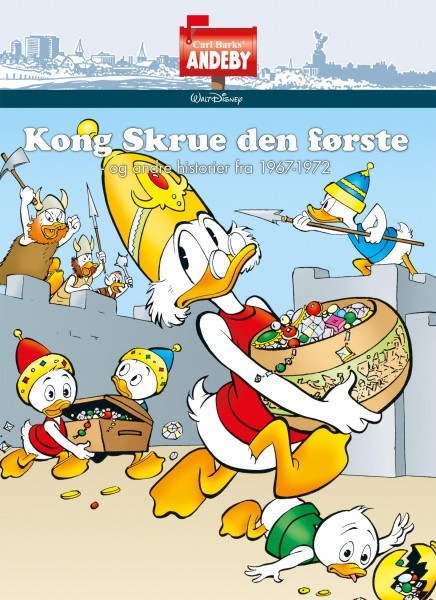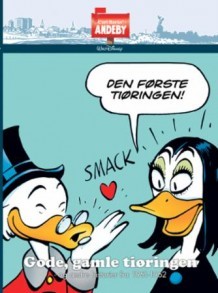
Part of Series
Настоящият том съдържа комиксите на Карл Баркс от 1954-1955 година. В заглавната история „Седемте златни града на Сибола“ Скрудж иска да инвестира в нов бизнес, но дали съществува някаква фирма, която все още не му принадлежи? В историята „Ни видра, ни плъх“, старият скъперник не може да отвори своя сейф. Шифърът за него се намира на шията на леминг, който е на борда на кораб, поел курс към Норвегия. Следващият комикс разказва за луд професор, който иска да изобрети зеле без мирис. Уви, опитите се провалят и вместо търсения резултат, професорът открива изключително ефикасен вкаменяващ лъч. Междувременно в Дъкбург, Хюи, Дюи и Луи готвят отчаян план за бягство от наближаващата учебна година, а Доналд има толкова голям проблем със сладкото, че се оказва затворен в бъчва на кушетката у психиатъра! ДЪКБУРГ е колекция от любимите класически комикси, написани и нарисувани от Карл Баркс между 1943 и 1972 година. Комиксите са представени в хронологичен ред. Истинско съкровище за феновете!
Author

Carl Barks (March 27, 1901 – August 25, 2000) was an American Disney Studio illustrator and comic book creator, who invented Duckburg and many of its inhabitants, such as Scrooge McDuck (1947), Gladstone Gander (1948), the Beagle Boys (1951), The Junior Woodchucks (1951), Gyro Gearloose (1952), Cornelius Coot (1952), Flintheart Glomgold (1956), John D. Rockerduck (1961) and Magica De Spell (1961). The quality of his scripts and drawings earned him the nicknames "The Duck Man" and "The Good Duck Artist". People who work for Disney generally do so in relative anonymity; the stories only carry Walt Disney's name and (sometimes) a short identification number. Prior to 1960, the creator of these stories remained a mystery to his readers. However, many readers recognized Barks' work and drawing style, and began to call him the Good Duck Artist, a label which stuck even after his true identity was discovered by John and Bill Spicer in 1959. After Barks received a 1960 visit from Bill and John Spicer and Ron Leonard, he was no longer anonymous, as his name soon became known to his readers. Writer-artist Will Eisner called him "the Hans Christian Andersen of comic books." In 1987, Barks was one of the three inaugural inductees of the Will Eisner Comic Book Hall of Fame. (From wikipedia)


